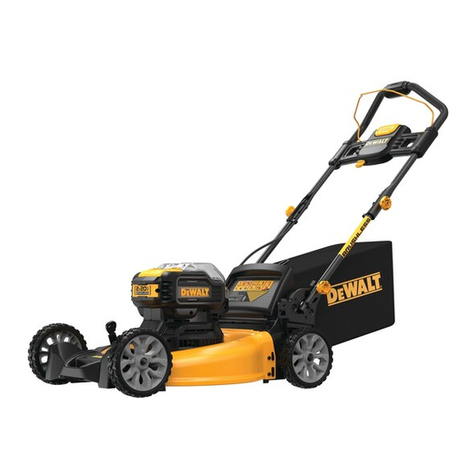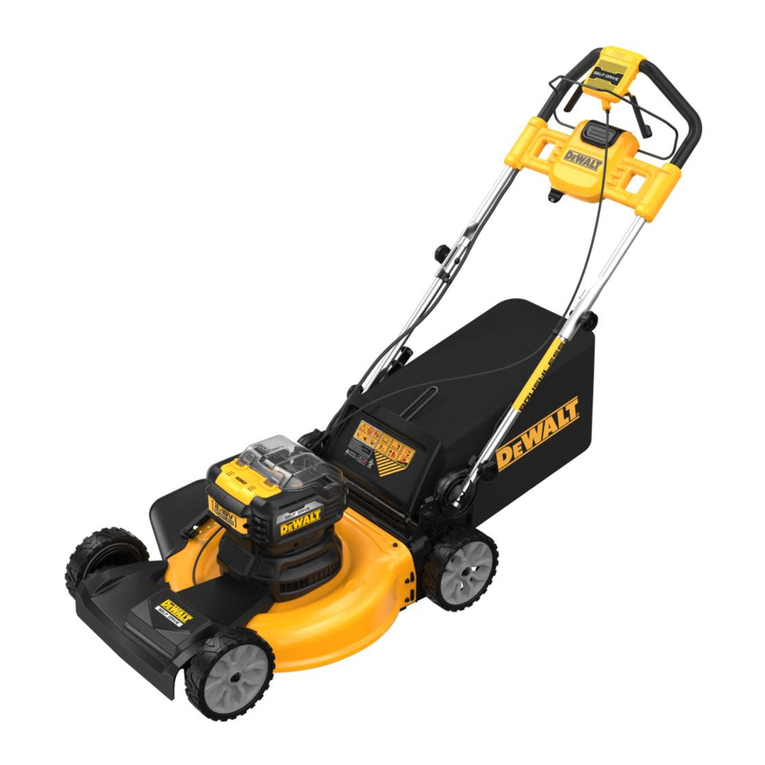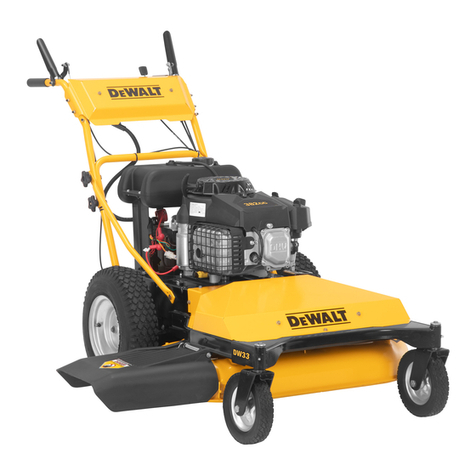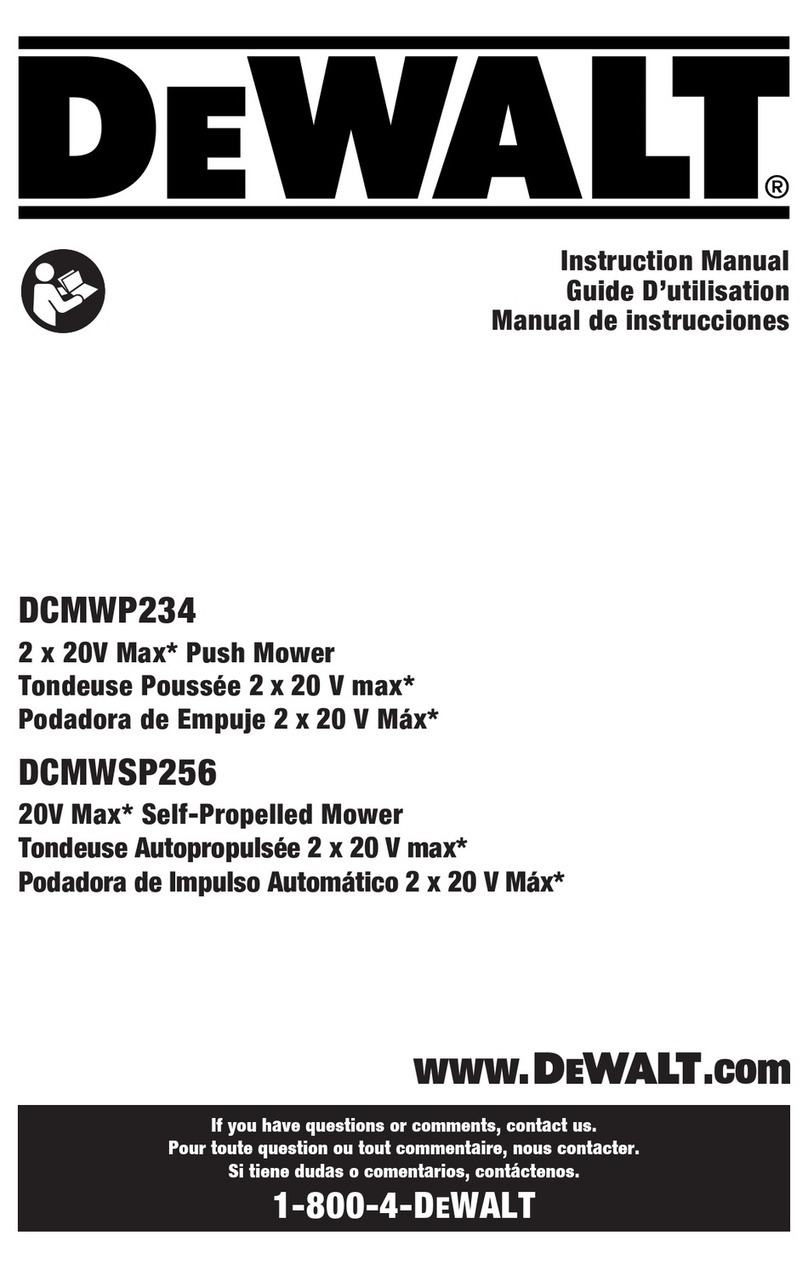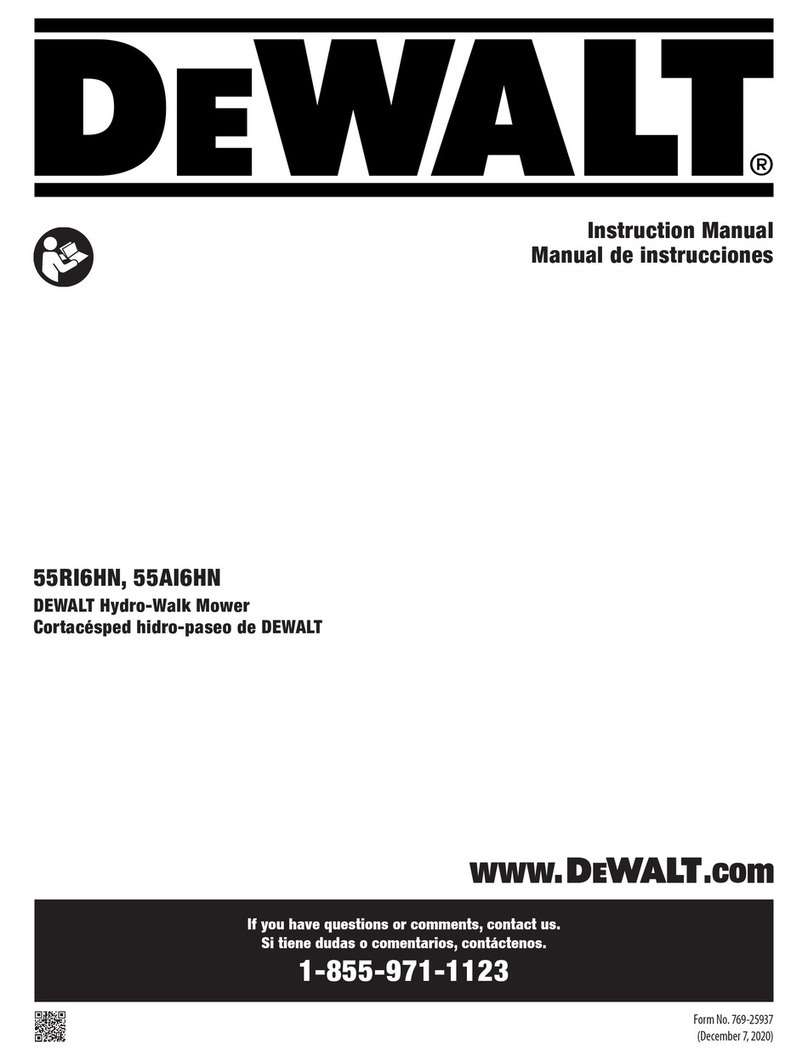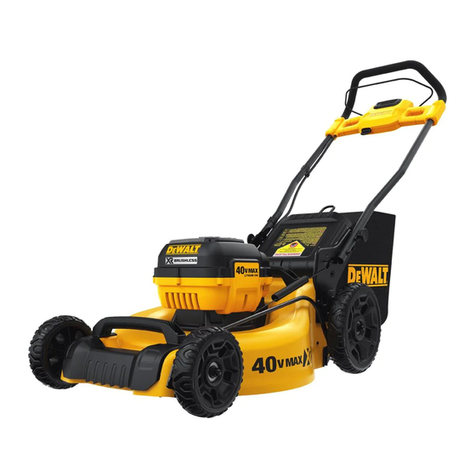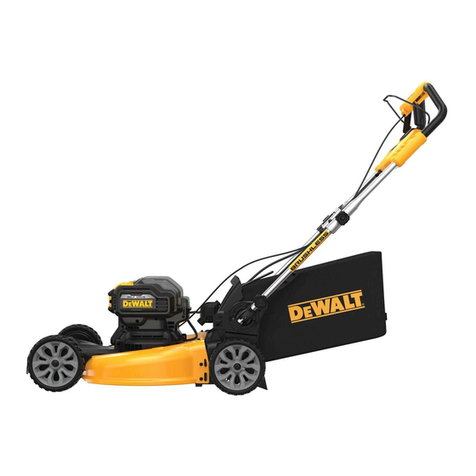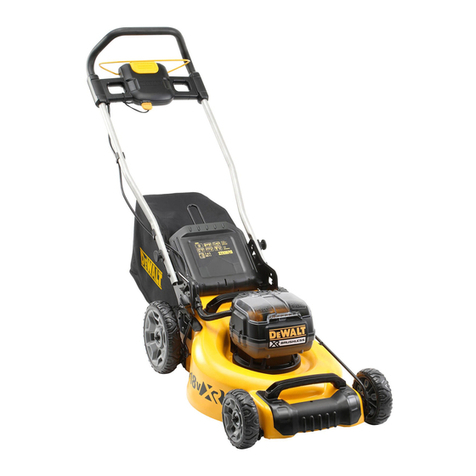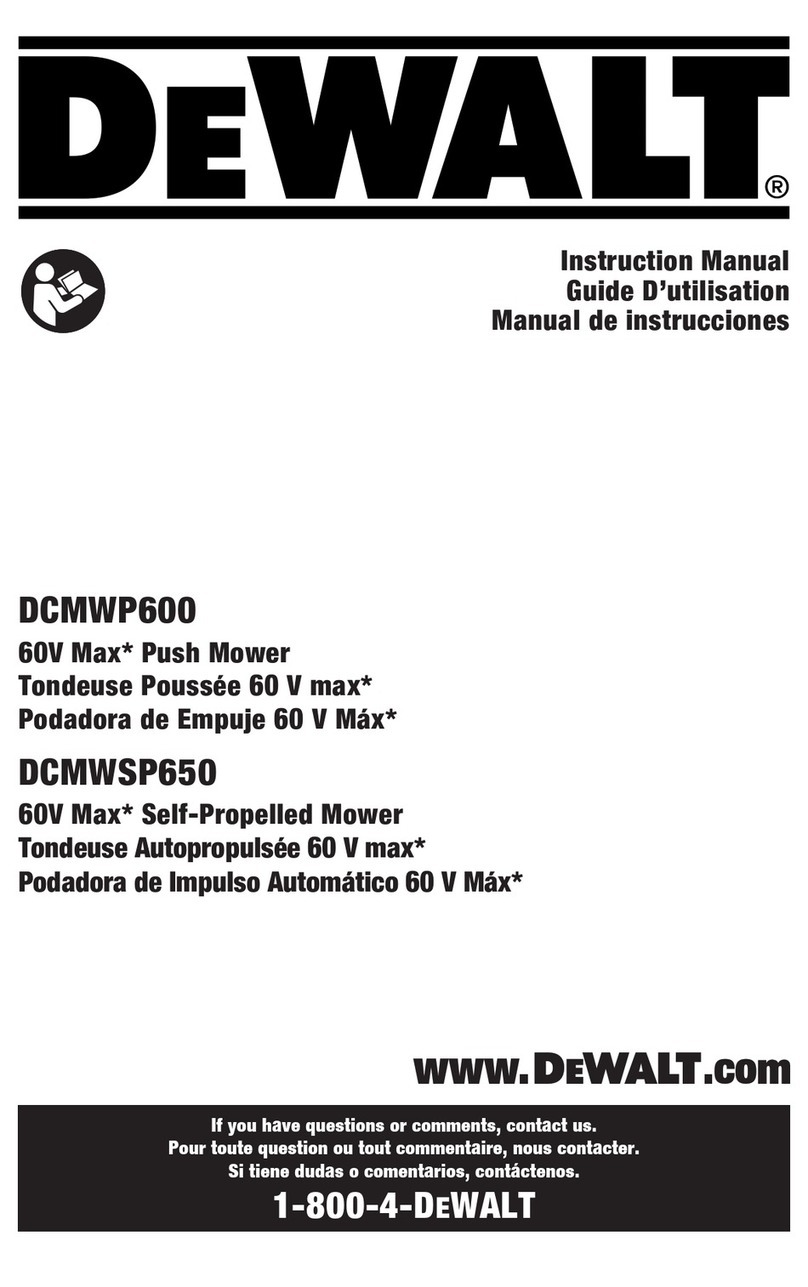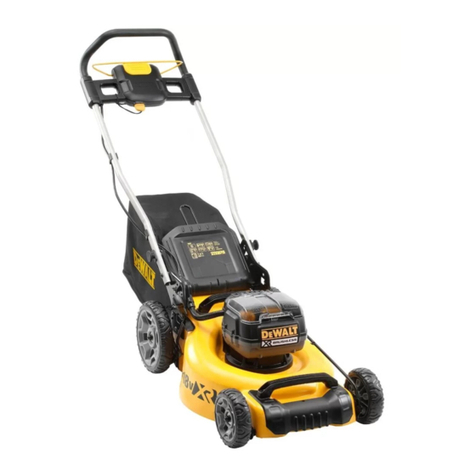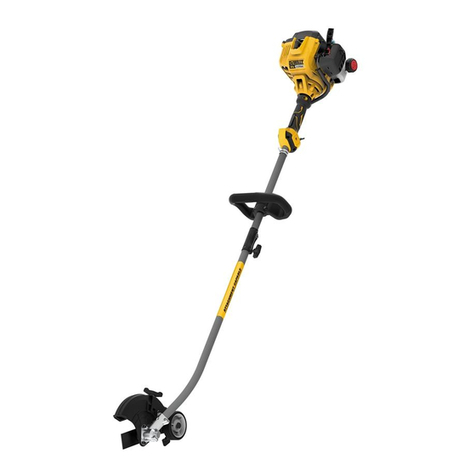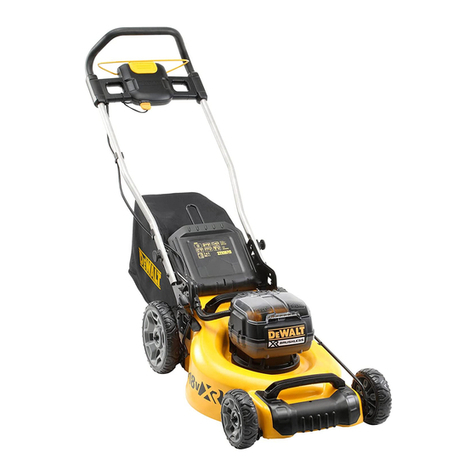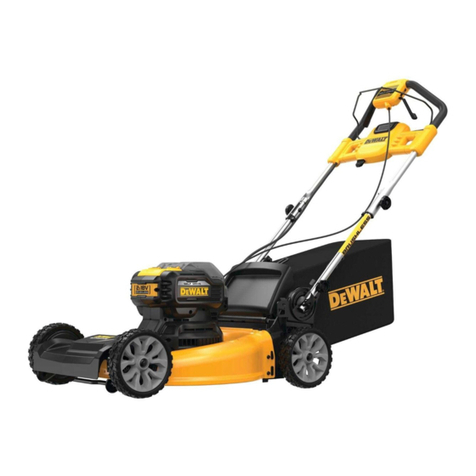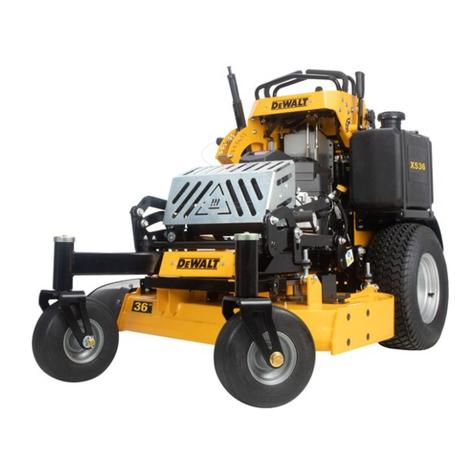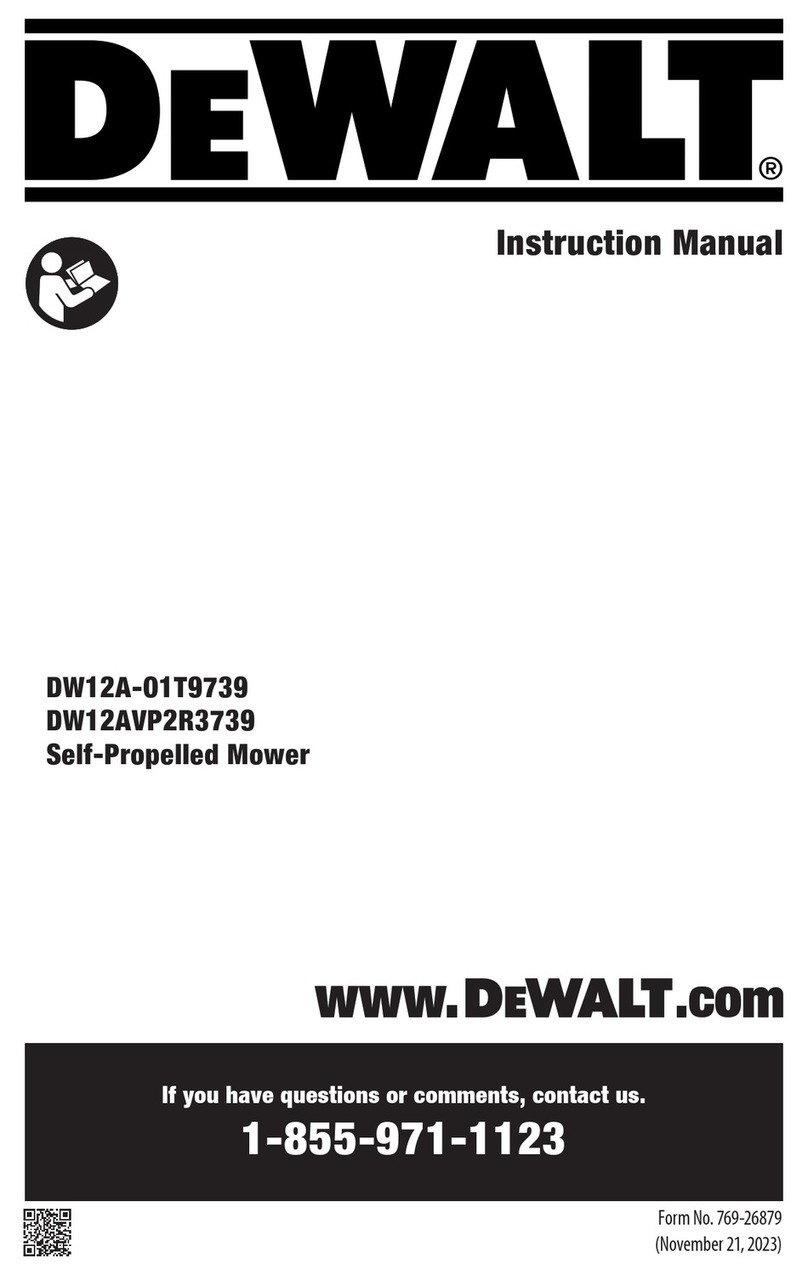
ENGLISH
2
IMPORTANT SAFETY WARNINGS AND
INSTRUCTIONS
WARNING: To reduce risk of injury:
• Before any use, be sure everyone using this tool
reads and understands all safety instructions and
other information contained in thismanual.
• Save these instructions and review frequently prior
to use and in instructingothers.
WARNING: When using battery powered lawn
mowers, basic safety precautions should always be
followed to reduce the risk of fire, electric shock, and
personal injury, including thefollowing.
READ ALL INSTRUCTIONS
IMPORTANT SAFE PRACTICES FOR
WALK-BEHIND MOWERS
DANGER: This mower is capable of amputating
hands and feet and throwing objects. Failure to
observe the following safety instructions could result
in serious injury ordeath.
General Operation
1 . Read, understand, and follow all instructions on the
mower and in the instruction manual beforestarting.
2 . Do not put hands or feet near or under the mower. Keep
clear of the discharge opening at alltimes.
3 . Only allow responsible adults, who are familiar with the
instructions, to operate thismower.
4 . Clear the area where the mower is to be used of objects
such as rocks, sticks, wire, toys, bones, etc., which could
be thrown by the blade. Objects struck by the blade can
cause severe injury to persons. Stay behind the handle
when the motor isrunning.
5 . Be sure the area surrounding the mower is clear of
bystanders before operating. All bystanders and pets
should be kept at a safe distance. Stop the mower if
anyone enters the area surrounding themower.
6 . Do not operate mower barefooted or while wearing
sandals. Always wear substantialfootwear.
7 . Do not pull mower backward unless absolutely necessary.
Always look down and behind before and while
movingbackward.
8 . Never direct discharged material toward anyone. Avoid
discharging material against a wall or obstruction.
Material may ricochet back toward the operator. Release
bail handle to turn mower off and stop the blade when
crossing gravelsurfaces.
9 . Do not operate mower without the entire grass catcher,
discharge guard, rear guard, or other safety protective
devices in place and working. Periodically check all guards
and safety protective devices to ensure they are in good
working order and will operate properly and perform their
intended function. Replace a damaged latch, guard or
other safety device before furtheruse.
10 . Never leave a running mowerunattended.
11 . Always release the bail handle to stop the motor and wait
until the blade comes to a complete stop and remove the
safety key and battery packs before cleaning the mower,
removing the grass catcher, un-clogging the discharge
guard, when leaving the mower, or before making any
adjustments, repairs orinspections.
12 . Operate mower only in daylight or good artificial light
when objects in the path of the blade are clearly visible
from the operating area of themower.
13 . Do not operate mower while under the influence of
alcohol or drugs, or when you are tired or ill. Always stay
alert, watch what you are doing, and use commonsense.
14 . Avoid dangerous environments. Never operate mower in
damp or wet grass, never use mower in the rain. Always
be sure of your footing; walk; neverrun.
15 . Disengage the drive system, if so equipped, before starting
themotor.
16 . If the mower should start to vibrate abnormally, release
the bail handle, wait for the blade to stop and remove
the safety key and battery packs, then check for the cause
immediately. Vibration is generally a warning oftrouble.
17 . Always wear proper eye and respiratory protection when
operating themower.
18 . The use of any accessory or attachment not recommended
for use with this mower could be hazardous. Only use
accessories approved byDeWALT.
19 . Never overreach while operating the mower. Always be
sure to keep proper footing and balance at all times while
operating themower.
Slope Operation
Slopes are a major factor related to slip and fall accidents,
which can result in severe injury. Operation on all slopes
requires extra caution. If you feel uneasy on a slope, do not
mowit.
1 . Mow across the face of slopes; never up and down.
Exercise extreme caution when changing direction
onslopes.
2 . Watch for holes, ruts, bumps, rocks, or other hidden
objects. Uneven terrain could cause a slip and fall
accident. Tall grass can hideobstacles.
3 . Do not mow on wet grass or excessively steep slopes. Poor
footing could cause a slip and fallaccident.
4 . Do not mow near drop-offs, ditches, or embankments.
You could lose your footing orbalance.
Children
1 . Tragic accidents can occur if the operator is not alert to
the presence of children. Children are often attracted to
the mower and the mowing activity. Never assume that
children will remain where you last sawthem.
2 . Keep children out of the mowing area and under
the watchful care of a responsible adult other than
theoperator.
3 . Be alert and turn mower off if a child enters thearea.
4 . Never allow children to operate themower.


